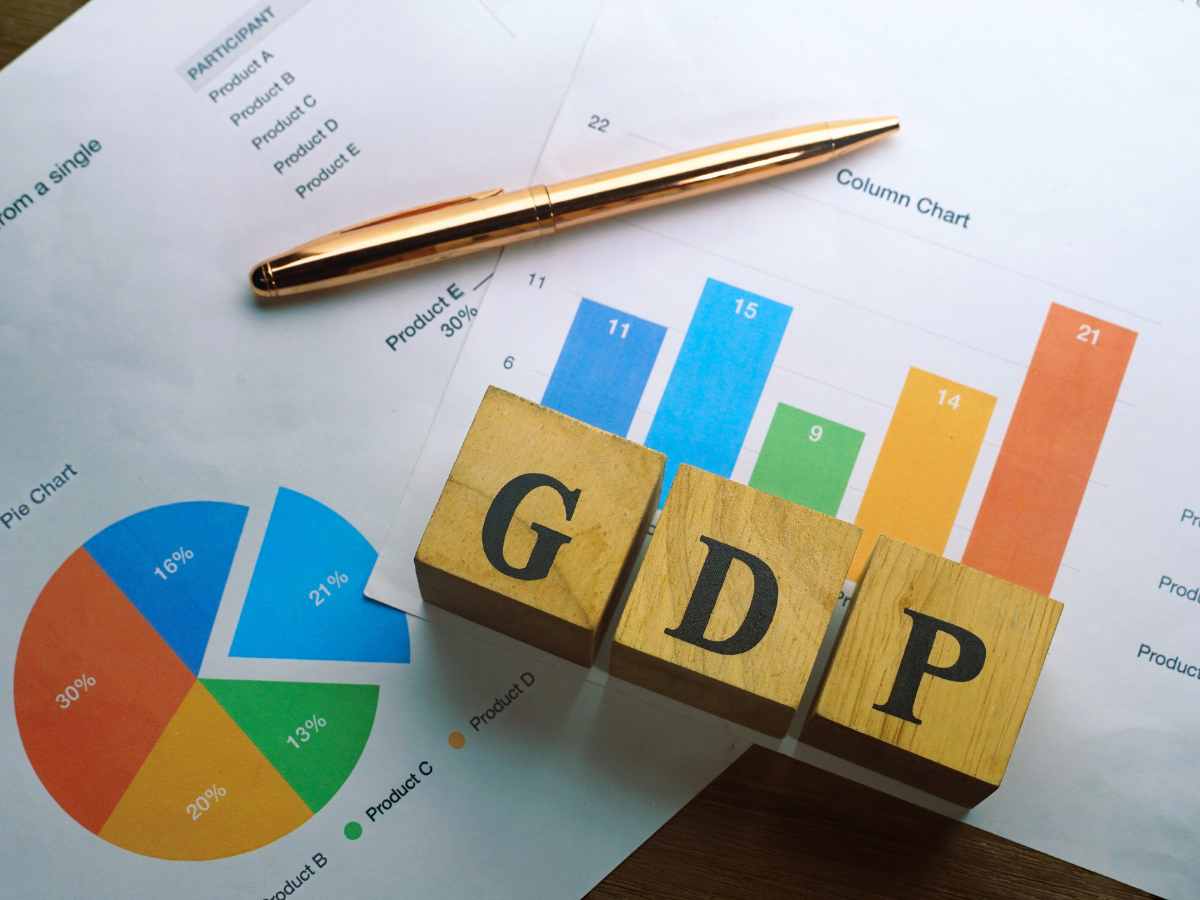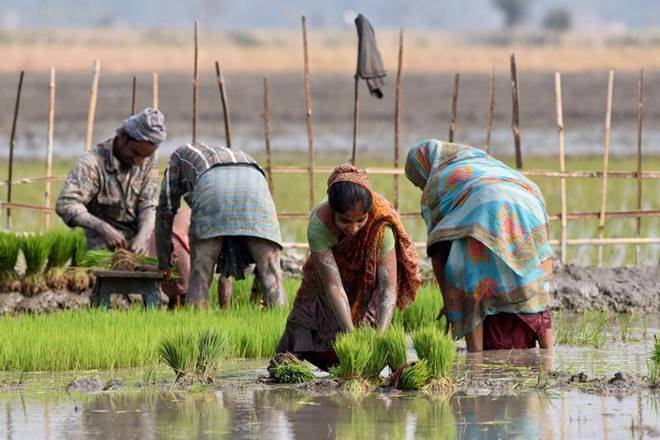India’s GDP Slowdown: Can Growth Be Revived In FY 2024-25?
From global headwinds to domestic hurdles, India's projected 6.4% growth demands bold policy reforms to sustain momentum in FY 2024-25.

For FY 2024–2025, the National Statistics Office has released its First Advance Estimates of Annual Gross Domestic Product. The sharp GDP slowdown is disturbing, especially given a series of challenges for the Indian economy at the domestic and global levels.
Key Highlights of the GDP Estimates
Real and Nominal GDP Growth
- Real GDP Growth: The Indian economy is projected to grow by 6.4% in FY 2024-25, a significant decline from the 8.2% growth recorded in FY 2023-24. This slowdown reflects a combination of extrinsic forces – global demand slowing, geopolitical tensions on the international agenda and some domestic structural causes.
- Nominal GDP Growth: Nominal GDP growth is still expected to register 9.7 per cent growth in FY 2024-25, at best, a slender improvement over FY 2023-24 growth, which was 9.6 per cent. The divergence between nominal and real GDP growth nonetheless captures residual inflationary impetus.
Sectoral Analysis of GVA
Agriculture and Allied Activities
- Real GVA for the Agriculture and Allied Sector will likely grow at 3.8 per cent, recovering from 1.4 per cent in FY 2023-24. The recovery is fragile, with risks from volatility in global commodity prices and uncertain weather patterns.
Manufacturing Sector
- Manufacturing is likely to grow at a relatively tame rate of 4.8%. The deceleration follows after growth in FY 2023-24 was 6.3%. Bottlenecks primarily include input cost inflation, supply chain disruption, and export demand.
Construction Sector
- The Construction Sector, which has grown by 8.6% in the previous quarter, remains a bright spot, with drivers including increased investments in infrastructure and government-led initiatives such as the PM Gati Shakti Plan. Yet, rising input costs and labour shortages could weigh on this expansion.
Financial, Real Estate, and Professional Services
- This sector is likely to grow at a rate of 7.3%, backed up by real estate and professional service demand, even though it faces some liquidity squeeze and tightening regulatory scrutiny that affects its prospects.
Expenditure Components of GDP
Private Final Consumption Expenditure (PFCE)
Private consumption, a major driver of GDP, is expected to increase by 7.3%, recovering from 4.0% in FY 2023-24. Improved consumer sentiment is reflected here, but income inequality and rural consumption remain concerns.
Government Final Consumption Expenditure (GFCE)
Government spending is estimated to grow by 4.1%, compared to 2.5% in FY 2023-24. Increased expenditure on social welfare and infrastructure is expected to provide some buffer to the overall slowdown.
Gross Fixed Capital Formation (GFCF)
Investments in infrastructure and capital assets are expected to grow by 8.2%, driven by government initiatives in transport, energy, and urban development. However, private investment remains cautious due to rising interest rates and uncertain economic conditions.
Factors Behind the GDP Slowdown
- Global Headwinds:
- Geopolitical Risks: Conflict in Eastern Europe and tension in the Middle East have sent shockwaves to the world economy and created inflationary pressure.
- Weak Global Demand: Export growth is slowing because the primary consumers are reducing demand; the U.S. and Europe are among these.
- Domestic Challenges:
- Rising Interest Rates: Higher borrowing costs have impacted corporate investments and consumer spending.
- Structural Issues: Challenges like unemployment and uneven sectoral recovery continue to weigh on economic momentum.
- Inflationary Pressures:
- Persistent inflation, especially in food and energy prices, has eroded purchasing power and constrained consumption growth.

Annual GDP and GVA Estimates
At Constant Prices (2011-12 Base Year)
- GDP: The real GDP is estimated at ₹184.88 lakh crore, up from ₹173.82 lakh crore in FY 2023-24.
- GVA: The real GVA is projected to reach ₹168.91 lakh crore, compared to ₹158.74 lakh crore in the previous financial year.
At Current Prices
- GDP: The nominal GDP is expected to reach ₹324.11 lakh crore, against ₹295.36 lakh crore in FY 2023-24.
- GVA: Nominal GVA is estimated at ₹292.64 lakh crore, up from ₹267.62 lakh crore in FY 2023-24.
Implications of the Slowdown
- Employment Generation: Slow GDP growth is a significant challenge in employment generation, as manufacturing and export-oriented industries tend to suffer from job cuts or new hiring coming to an almost standstill. Third, if there is not enough employment in rural and semi-urban areas, income inequality and low consumption are likely to increase.
- Fiscal Deficit: Fiscal deficit target management comes accompanied by the problem of sustaining growth momentum. Tax revenues, corporate tax, and even GST collections suffer a fall during this period of lower economic activities. This hurts fiscal resources more. Borrowings might go up, but interest rates do, too.
- Investment Climate: The subdued economic environment will increase uncertainty among both domestic and foreign investors. Rising input costs and the volatile global market might even deter capital inflows, which is an upside to government schemes like the PLI scheme that aim to attract investments.
Policy Measures to Revive Growth
Boosting Private Investment
Creating a much-needed investment-friendly environment by decongesting regulatory bottlenecks and consolidating public-private partnerships would spur private investment; tax incentives along with reduced borrowing costs for the manufacturing, energy, and the technology sectors would encourage investments.

Enhancing Export Competitiveness
A further response to weakness in global demand is the expansion of the African, Latin American, and Southeast Asian export bases. Policies that reduce the cost of logistics through better port facilities and streamlining customs procedures should significantly enhance export competitiveness.
Supporting Rural Economy
The rural economy needs focused intervention to sustain the growth momentum. Increasing agricultural credit, irrigation infrastructure, and crop insurance reforms are some of the initiatives that will reduce farmer vulnerability. Rural non-farm employment needs to be boosted through skill development programs.
Inflation Management
Therefore, it is incumbent on the RBI and the government to work collectively to alleviate inflationary pressures. With the supply chains being strengthened to bridge bottlenecks in foodstuffs and critical essentials, balancing monetary tightening in growth will smoothen growth and control inflation.
Reforming Labor Markets
Unemployment can be minimized through inflexible labour laws and some incentives for job creation. Moreover, promoting skill development programs to the industry’s needs would enhance youth employability.
Digital Economy and Innovation
Digital infrastructure investments and innovation-driven startups will create new growth opportunities. Developing the digital payments ecosystem and e-governance will also increase efficiency and transparency.
Digital Economy and Innovation
Digital infrastructure investments and innovation-driven startups will unlock new paths to growth. A robust digital payments ecosystem and e-governance will increase efficiency and transparency.

Conclusion
That makes it all the more pertinent for policymakers and stakeholders to recall that Indian GDP growth must be tamed to 6.4% in FY 2024–2025. Some comforting news emanates from the fact that at least some industries worse affected by this crisis have emerged from their closet. There are two clear examples: one, financial services, and two, construction. But definitive actions are in place as external headwinds and structural problems plague the economy. Steering the economy to robust growth would require strategic policy action, consumer and investment resilience, and more. In this light, fiscal, monetary, and structural policy combinations become a priority for ameliorating near-term challenges while providing the basis for sustained economic growth.
To make India’s growth process more inclusive, the government has to ensure long-term policies that promote productivity, job opportunities, and enhanced quality of life for everyone in the country. Focusing on innovation, infrastructure, and investment will enable the government to overcome present turmoil and emerge much stronger amidst uncertainties in the world economy.




